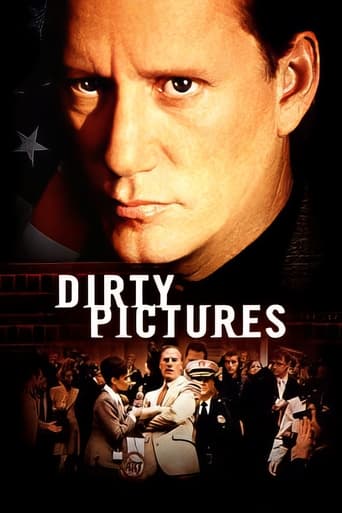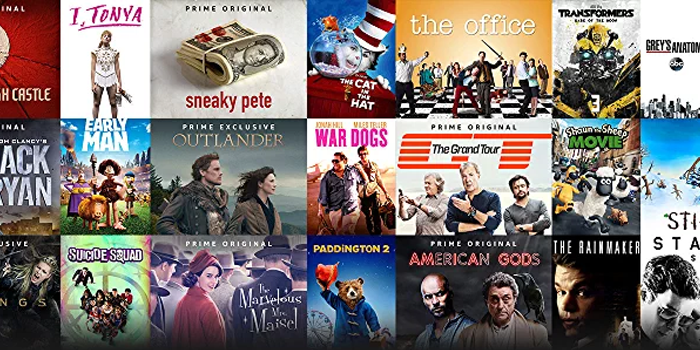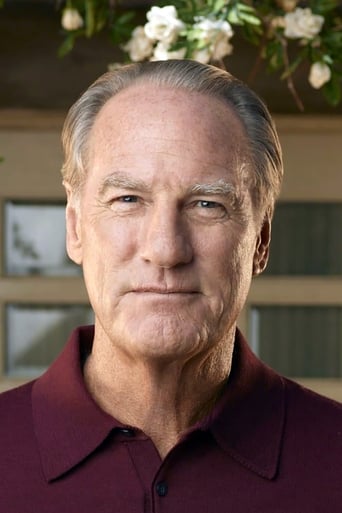Dirty Pictures (2000)
A Cincinnati museum director goes on trial in 1990 for exhibiting sadomasochistic photographs taken by Robert Mapplethorpe.
Watch Trailer
Cast


Reviews
Don't listen to the negative reviews
The best films of this genre always show a path and provide a takeaway for being a better person.
The acting in this movie is really good.
This is a dark and sometimes deeply uncomfortable drama
When I was little, CBS, NBC and ABC had the corner on "Made for TV films" which were shown weekly, monthly, twice a year, etc. Many of them dove and dealt with current events and showed cautionary tales. As a result, some of them were very good for the small budgets they had. But somewhere along the line, Standards and Practices dictated that many of the more controversial themes had to be geared towards a general audience (Oh, the CHILDREN!!!). In my view, much of what was seen in many of these network films became antiseptics of very hard hitting, gut wrenching stories.In walks cable stations such as HBO and Showtime that start producing its own movies for pay subscribers - showing warts and all - and let me tell you, they have been fantastic. I can't honestly say I've seen them all, but my very favorite, HBO's "Barbarians at the Gate" is the first one I saw and I knew the days of antiseptic network made for TV movies were over.Frank Pierson directed what is actually an artistic no win situation -- and as far as I am concerned, he did a good job in telling the story without drawing a conclusion on itself. The story is a true story about a museum in Cincinnati that was to display the artist Robert Mapplethorpe exhibit and contained within that exhibit was pictures of sadomasochism and private parts. Mind you, that was not the work of the entire exhibit, but those particular pictures within that work was what caused the problem.Dennis Barrie, played by the wonderful actor James Woods, is the museum curator that had to make a decision - well several decisions: To show or not to show the exhibit, to show all of the exhibit or parts of it, to show some of the exhibit to the general museum audience and block off the other parts to an audience over 21...and so on and so forth. What is at stake here - The First Amendment of Free speech? A man wanting to protect an artists' vision and rights over his family's welfare? A man wanting to be a martyr? A man wanting to corrupt Cincinnati? A man wanting PR? A man who secretly had a private fetish? All of these questions come up in this film - and what are the answers? Was Barrie right or wrong in what he did? Was the town right? His family right? The museum Board of Directors right? The government right? YOU decide. Art is subjective and what I would see as art which is appealing and beautiful, the next person may definitely not. Take for example Andy Warhol and the Campbell Soup can, Yoko Ono and her famous "YES" painting, Georgia O'Keefe and her 'plants', Jean-Michel Basquiat and his Samo and Robert Mapplethorpe and his "dirty pictures". For me, I can look at quite a few works from these folks (and more) and say, "hmmm, that's a beautiful reflection of real life" while someone standing right next to me looks at the same thing, and is shocked and infuriated.But then, such as in the case of artist Robert Mapplethorpe, I had only seen a limited view of his work. A section. That particular side of his work didn't bother me any, which is why I could not understand what the fuss was about. Then came this presentation of "Dirty Pictures" that let's you know all sides of what the 'fuss' is about.....and yes, as someone who will die to protect the first amendment and who loves the expression of art and freedom for artists; I was very, very, very uncomfortable by a few pictures contained within this exhibit. But that's the beauty of this film. Film is art TOO, and this film goes "there" by presenting you the case, the struggle for the curator and his family, the wrenching of the city and the government who funded the museum and the question of "what is right to do?" When this picture was presented in America, one of the biggest pieces of publicity surrounding it was "Are they going to show the pictures in question?" Ah, there's the rub. Do you want to see the questionable Mapplethorpe pictures to be able to draw your own conclusions? Did you draw a conclusion already? Does this made for cable film need to show you the "dirty pictures" to tell about you about the dirty pictures? And if they do show the pictures, aren't they doing the same that as Dennis Barrie?Decisions, decisions, decisions. Very right and undoubtedly very wrong. It's your view. That's what makes this movie bold and sassy. A brash effort, a darn good telling of a "real life" story and a still controversial subject matter -- no matter what end of the spectrum you stand.
This movie opens the gates to what has been one of the most contreversial topics in the last half century. I agree and disagree with both sides on some of the issues. In my opinion this movie was well made that shows both sides of the issue and gives people representing each side a fair chance and explaining thier side. (albeit in my opinion leaning a little to the left :) )
Like most of the Showtime exclusive movies this one is very gutsy and makes no qualms about where it stands on the controversial issues it features.The controversy in this case is art verses obscenity, and where or indeed if, censorship should fit in. It focuses mainly on the arrest of Dennis Barrie, the curator of Cincinnati's largest museum. He was arrested for booking a Robert Mapplethorpe exhibit despite the fact that it had already stirred up controversy elsewhere.The film has its negative points. It tries so hard to focus on the censorship issue that it overdoses on the morality of all of those who back the anti-censorship laws. There are endless scenes of Barrie's normal, happy home life just to show he's not a fan of "degenerate art" but an upstanding citizen who just believes in defending the constitution (although his constant argument is that art is the only thing he believes in). And there is the familiar melodrama with the wife who must decide whether she should stand by her man. But James Woods and Diana Scarwid are so natural and engaging that I kind of enjoyed hanging out with them anyway! Unfortunately the rest of the cast are extremely stereotyped, especially when the film gets into the courtroom.The other negative points have to do with the way the fans of Mapplethorpe were depicted. Either as militant "degenerates" or as eggheaded art critics who spout artbabble on cue. All of the backers of the exhibition, including Barrie, and of course all of the jury members (as we know jury members are symbolically the voice of the country as a whole), show their disgust and indignation over Mapplethorpe's work. Thus the film is left with the point being that no matter how warped and disgusting and offensive "art" may be, it has a right to be exhibited. It is a valid point but it sort of underlines the Dan Quayle theory of the "cultural elite" (ie: that contemporary art forms belong to a specific few and it's not something the "average" person can understand or appreciate). As an "average" person myself who happens to admire Robert Mapplethorpe's work, I know that is not true and I somewhat resent the fact that people like myself were not represented in this film.This film does has many positive points though. The main ones being the intercutting of comments by such pundits as Salmon Rushdie, Barney Frank, and Fran Liebowitz. They offer great food for thought that only they could articulate so fruitfully! It also intercuts scenes from the original events which had surrounded the trial and the attempted closing down of the museum.And despite the formula outline, there's a lot of witty and profound dialogue that packs a powerhouse of emotional grit and gives us a great deal to think about. See it with a friend (or friends/family) and you'll end up discussing it well into the night!
This film deals with the same 1st Amendment rights issues as THE PEOPLE VS. LARRY FLYNT. It presents the case of the Cincinnati art museum that displayed the photography of Robert Mapplethorpe. Intercut with the action of the film are comments from both the political right and left, including Mapplethorpe himself.The song "Banned in the USA," a "Born in the USA" parody dealing with censorship, sums up the point -- that if some people protest against what other people want, that's fine, but if the protestors try to impose their own will through misapplication of law, that is not only censorship but also the first step towards dictatorship hiding under the guise of benevolent morality.The cast is strong, especially James Woods as the museum director. The plot meanders back and forth in time, giving us background and consequences woven together into an intriguing story. The issues raised are important, and the dramatic presentation of these issues makes the film worthwhile.








